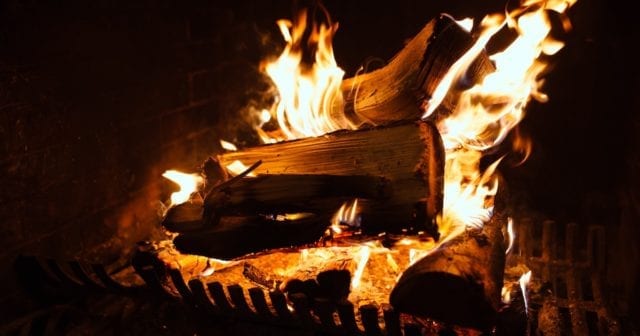Every winter, when the use of fireplaces and wood stoves increase, the chance of a house fire increases as well. The best way to prevent a tragedy in your home this winter is to properly maintain your fireplace or wood stove.
Here’s what you need to know about fireplace and wood stove maintenance.
Maintenance You Can Do Yourself
There are some things you can do yourself to keep your fireplace or wood stove running properly and efficiently.
- Check your wood stove door seals to make sure they’re not crumbling or falling apart.
- Remove ashes from the firebox once a fire is out and the ashes are completely cold. If too much ash builds up, the airflow may be blocked.
- Test your fireplace by lighting a few small pieces of seasoned wood from the top down. The smoke should exit vertically, but if it doesn’t, look for common problems: soot or creosote build-up, debris, or a closed damper. You may also need to make sure the wood you’re using isn’t wet.
- Check your smoke and/or carbon monoxide detector every month as part of your maintenance plan.
- Keep combustible and flammable things away from the fireplace while its burning. This includes carpet, curtains, and furniture. Children and pets shouldn’t be too close or get their toys too close to a burning fireplace.
- Make sure you have a chimney cap installed at the top of your chimney to prevent animals and other debris from falling in.
- Burn only seasoned wood. Don’t burn driftwood, trash, treated wood, or artificial logs.
Schedule Professional Cleaning and Maintenance
If you use your fireplace or wood stove on a regular basis through the winter months, you should also have it professionally maintained and cleaned at least once a year. Creosote and soot can build up over time, especially if fires are burning inefficiently. This material can easily ignite and cause a chimney fire. You mighty not know the chimney fire is happening until it’s too late. It’s dangerous for the structure of your chimney and your home.
Here’s what a professional will look for and do:
- Look for structural damage like cracks or air leaks. An air leak can change the flame in your fireplace and even cause a fire to ignite outside your fireplace.
- Thoroughly clean your chimney, getting rid of any soot or creosote build-up.
- Look for and remove obstructions and debris.
- Make sure the damper and flue work properly and that the chimney cap is properly installed.
Having your chimney and fireplace professionally cleaned before winter arrives will catch any problems before you light the first fire of the winter season. Your fires will also burn more efficiently, and the air quality of your home will be better while the fire burns. Best of all, you’ll decrease the chances of a fire in your home.
If tragedy strikes, despite your best efforts, you need a home insurance policy that will help you rebuild from the ground up. Make sure you have enough coverage and the right kind in case the worst happens.
Contact Charlotte Insurance today. We’re happy to look over your existing policy and help you understand it better. We can also get quotes for a new home insurance policy that better protects you and your family.

